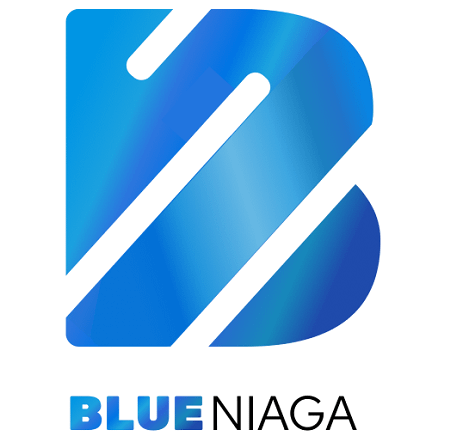Recovering from SEO penalties can feel like a daunting challenge, but it’s not impossible! If you’re navigating the murky waters of SEO penalties in Malaysia, you’re in the right place. This guide will walk you through effective strategies to bounce back and reclaim your online presence, drawing on practical examples and insights tailored for everyone from small business owners to seasoned marketers.
Understanding SEO Penalties
SEO penalties can stem from various sources, including algorithm updates, manual actions by search engines, or violations of SEO best practices. Knowing the root cause of your penalty is essential for determining your recovery strategy. Here’s what you need to know:
Types of SEO Penalties
- Algorithmic Penalties: Triggered by search engine algorithm updates, like Google’s Panda or Penguin. These changes can affect your site’s rankings based on how well you adhere to search engine guidelines.
- Manual Actions: Issued when a human reviewer at Google determines your site is violating their guidelines. These can be due to spammy backlinks, keyword stuffing, or other deceptive practices.
Identifying the Cause of Your SEO Penalty
Before you can recover, it’s crucial to pinpoint the exact reason for the penalty. Here’s how you can do that:
Use Google Search Console
This free tool provides insights into how your site is performing. Look for:
- Messages about manual actions in the “Security & Manual Actions” section.
- Changes in your site’s visibility and rankings, especially after major updates.
Conduct a Thorough SEO Audit
Conducting an audit can help uncover issues related to:
- On-page SEO (meta tags, content quality).
- Off-page SEO (backlink profile, domain authority).
- User experience factors (loading speed, mobile usability).
Effective Strategies for Recovery
1. Disavow Toxic Backlinks
If backlinks are causing your penalty, creating a disavow file can help. Here’s how to manage this process:
- Identifying and analyzing your backlink profile using tools like Ahrefs or SEMrush.
- Reaching out to webmasters to request link removals wherever possible.
- Creating a disavow file for links you cannot remove, and submitting it via Google Search Console.
2. Improve On-Page SEO
A crucial part of your recovery plan should focus on enhancing your on-page SEO. Prioritize the following aspects:
- Quality Content: Ensure your content is high-quality, original, and answers users’ queries effectively.
- Keyword Optimization: Avoid keyword stuffing by integrating keywords naturally within your content.
- Meta Tags: Optimize title and meta description tags with relevant keywords while maintaining their allure for click-through rates.
3. Correct Technical Issues
Technical SEO is often overlooked but critical for recovery. Common technical issues and their solutions include:
- Fix Broken Links: Regularly check for 404 errors and redirect users to relevant pages.
- Improve Site Speed: Use tools like Google PageSpeed Insights to identify speed issues and resolve them promptly.
- Enhance Mobile Usability: Ensure your website is mobile-friendly, as Google prioritizes mobile-first indexing.
4. Submit a Reconsideration Request
Once you’ve addressed the issues that led to your penalty, it’s time to submit a reconsideration request to Google. Here’s how to do it effectively:
- Prepare a comprehensive explanation of the steps you’ve taken to rectify the issues, including before-and-after examples of your changes.
- Be transparent about your past mistakes and show your commitment to adhering to guidelines moving forward.
- Keep your request concise and focused on actionable changes.
5. Monitor Your Progress
After submitting your request, the work doesn’t stop! You’ll need to continually monitor your site’s performance. Effective monitoring involves:
- Regularly checking your rankings and organic traffic to gauge recovery progress.
- Using Google Analytics and Google Search Console to analyze visitor behavior and traffic sources.
- A/B testing changes to your content and SEO strategies to find what works best.
6. Stay Updated on SEO Best Practices
SEO guidelines are constantly evolving, so you should stay in the loop on current best practices. Here are a few ways to do this:
- Follow influential SEO blogs and experts to understand algorithm changes.
- Participate in SEO webinars and community discussions to share insights and learn from others.
- Regularly review Google’s Search Central for updated guidelines.
The Importance of a Healthy Link Profile
Your link profile plays a vital role in determining your website’s authority and credibility online. Maintaining a healthy mix of backlinks from reputable sources can prevent future penalties. Consider these strategies:
Link Building Techniques
- Guest Blogging: Contribute to reputable blogs in your niche to earn high-quality backlinks.
- Content Marketing: Create valuable content that others want to recommend or link to.
- Social Media Engagement: Promote your content across social media platforms to increase exposure and potential backlinks.
Review and Refine Your Strategy
After recovery, it’s crucial to continually assess your SEO strategy. Implement changes based on performance data and keep learning from your analytics.
Keep Your Audience at the Center
Ultimately, a successful SEO strategy prioritizes user experience. Remember to regularly ask yourself:
- Is my content helpful and engaging for my target audience?
- Am I providing a seamless experience for site visitors?
This customer-centric approach will facilitate organic growth and resilience against future penalties.
Final Thoughts
While dealing with SEO penalties can feel like an uphill battle, following these effective strategies can empower you to reclaim your rankings. Stay proactive, keep learning, and remember that every website can bounce back and thrive in the digital landscape. Embrace the journey, and soon you’ll not only recover but evolve into a stronger, more authoritative online presence!


